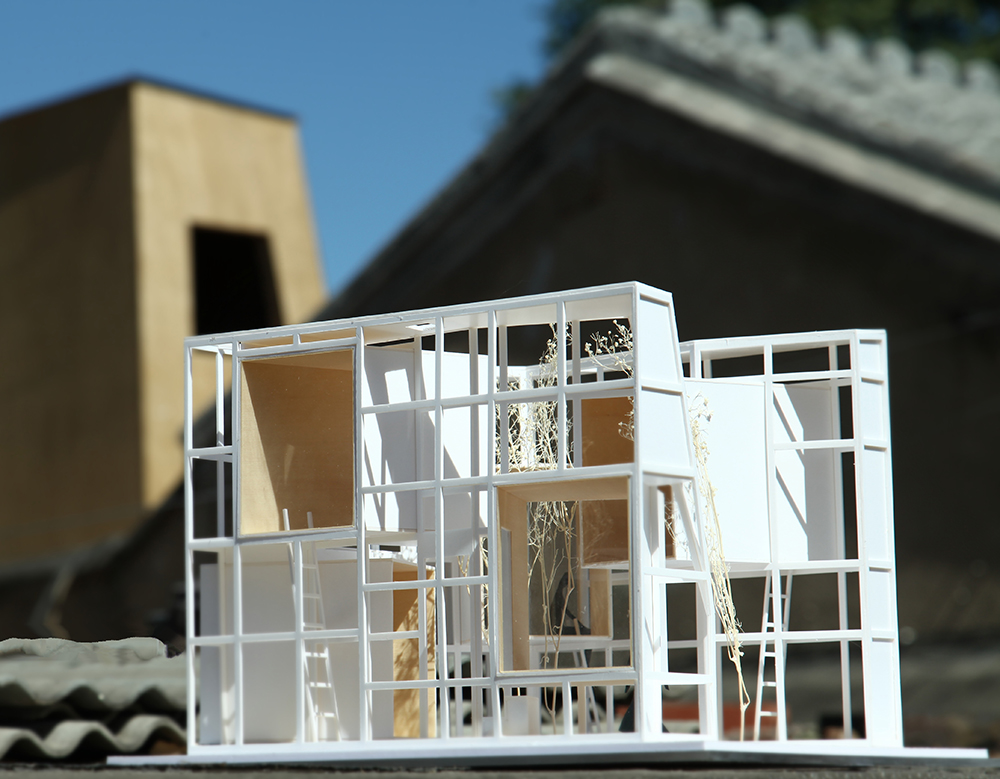CAMERICH’s Micro-Hutong Debuts at BJDW
As the scorching summer fades out, Beijing embraces its golden autumn amid mild rain and sweet osmanthus scents. This September, the prime season of Beijing, witnessed the opening of Beijing International Design Week and the Dashilar Alley show series. As one of the most famous historical blocks in the city, Dashilar district is home to some of the best-preserved reverend Chinese brands. It is also where designers and artists from around the world are gathering to display their pioneering works for the old city renovation project. Particularly exciting is Micro-Hutong, a joint design work by China’s top furniture brand CAMERICH and renowned architecture firm ZAO/standardarchitecture, which makes its debut on Yangmeizhu Street, Dashilar today.

As you step into Yangmeizhu Street, you will immediately see a simple, modern building embedded in the small hutong, just like a lady standing so beautifully and elegantly at the deep end of the alley. Occupying a land area of 30 square meters, Micro-Hutong consists of two storeys and stands five meters high. It includes five inward-segmented spaces, representing five separate rooms. The steel structure ensures maximal stability. 170 multi-layer environment-friendly plywood boards present a shiny birch wood exterior facet that goes along perfectly with the time-weathered setting in the surroundings. It is a unique sight in the sense that it stands out prominently, while integrates perfectly with the rest of Yangmeizhu Street.

The deep, winding Hutong has been a witness of the history and culture of the capital city, as well as the stories and nostalgia of its citizens one generation after another. How to build modern metropolitans while protecting their histories and cultures has been a challenge for nations around the world. By working with ZAO/standardarchitecture on the Micro-Hutong project, CAMERICH tries to explore this particular field. The purpose is to shed light on the possibility of providing more ultra-small residences within the limited space of the traditional hutongs.
“Traditionally, old city renovation has been all about demolition and destruction, resulting in irreversible severance of history. With our joint Micro-Hutong project with CAMERICH, we intend to think out of the box, to get something new from old things, or to make the most out of the history and the traditions,” said Zhang Ke, Chief Designer of ZAO/standardarchitecture. “The purpose of the project is to meet the demand of citizens in hutongs for a better, more comfortable life, i.e., to improve their living conditions to the extent possible, while inheriting the traditional culture. As the spatial resources get increasingly stressed in the city, the project is meaningful in that it might shed light on how to effectively utilize the limited resources available and to build user-friendly small residences.”
“As a member of the society, each company has its role to play in terms of corporate citizenship,” CAMERICH General Manager Fu Haijun explained the significance of Micro-Hutong from a different perspective, “Family is the basic component of the society. As a furniture business, we try to help improve the quality of this ‘component’ by delivering reliable products and unique ideas, which we hold as our biggest responsibility. For CAMERICH, Micro-Hutong is both a reality-based innovation and a responsibility. We will make more positive explorations and attempts with an aim at improving our living environment in the future.”
“As the leader of China’s furniture sector, CAMERICH has been focusing on forward-looking studies on our residences and lifestyles. This is our latest cooperation with Mr. Zhang Ke, following our teamwork at the Frontier Conceptual Show and Milan Design Week,” said CAMERICH Brand Operating Director Shirley Wang, “What CAMERICH cares about is not only furniture, but, more importantly, life and dreams. We believe that an outstanding design is doubtlessly the symbol of a culture. With its own stores in many international metropolitans, e.g., LA, London, Singapore and Sydney, CAMERICH stands firmly as a representative of the traditional Chinese culture, with open arms toward new trends in the world’s furniture market. Drawing from whatever useful resources, we stand ready to help consumers around the world to turn their dreams about home and life into reality.”


